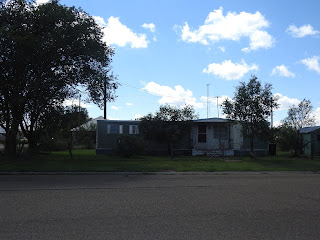Before planting this year, we tested our soil for ph and
other nutrients. We have soil with a ph between 6.5 – 7.5, so we don’t have to
amend it for acidity or alkalinity, but simply continue enriching it with
organic matter, alhamdulillah.
Mid-May was the last frost date for our area, and we were
busy preparing our garden area. We used our enclosed 8’x8’ area that had been
buried in the straw and bedding from cleaning out the chicken coop and the
rabbit cages for over a year to plant our broccoli and cabbage starts. We
removed about half of the composted material for use around the garden and then
planted in the rich soil, mulching with sawdust.
Last year, we tilled and deep mulched rows, a crazy loop,
and some different shapes and squiggly lines. This year, we came up with a plan
to protect the plants from the wind, create a micro climate for each plant, and
make use of old tires. We lay tires all over the mulched crazy loop, dug a
small hole in the center of each, and dumped in some rabbit poo. Then we
ensured that all were adequately mulched, using sawdust where the straw was
lacking. Once we had done all 125 tires, we did a few around the rectangle we
designated to be our melon patch. From the third week of May, we started
planting out our tomatoes, peppers, zucchini, straightneck squash, cucumbers, eggplant,
okra, pumpkins, melons, and corn. It was a process that took a couple of weeks.
We stacked tires two high for the larger tomato plants, providing support for
them and eliminating the need for staking. We also planted our first batch of
peanuts, started growing potatoes in large trash cans in sawdust, and planted
green beans, beets, turnips, and carrots in large tubs along with pepper and
strawberry transplants. The peanuts are, by far, the cutest plants we are
growing. We are propagating new strawberry plants from selected runners in new
tubs, ready for next year.
For the most part, we watered each morning unless it rained,
throughout the hottest part of the summer – the last two weeks of June and
first two weeks of July. After that, monsoon season kicked in with a vengeance
and since then we have just watched the garden grow, by the Power, Will, and
Mercy of Allah Alone. We fertilized the plants regularly with whey and soured
milk (the tomatoes and peanuts love it!), rabbit poo water, and a simple
fertilizer made from putting weeds, grass clippings, and some raw composting
scraps into a 5 gallon bucket with water and letting it ferment for a few days.
We call it the stinky bucket, LOL.
The garden is thriving and we are gradually harvesting
increasing amounts each day, masha’Allah.
We have a bumper crop of cabbages, hot peppers, and hundreds of tomatoes
from cherry and roma to heirloom black streaked Vernissage, setting fruit. Battered
squash flowers have become our new snack of choice, we pick a cabbage and pull
a carrot when we want to make egg rolls, put together a mélange of snow peas,
zucchini, broccoli, and greens for a stir fry, and enjoy a handful of sweet,
red strawberries on a regular basis, alhamdulIllah. We chose everbearing
strawberries so we could enjoy them for a much longer growing season.
Cool weather sowing has been done for a few root vegetables, crucifers, and greens. As for our indoor growing, while we breathed a huge sigh of relief to have hundreds of plants finally transplanted outside, we still have flourishing hanging baskets with strawberries gracing our home. We also have a variety of herbs, hot peppers, greens, and beautiful ginger and turmeric plants.
As for what grows naturally:
- a wide variety of grasses including oat and wheat grass. We harvested a few oat and wheat grains last year, but for the most part let them reseed. We now have large areas of wheat grass, masha’Allah.
- thousands of sunflowers. If someone were to look, they
would think we had planted them in specific places for landscaping, but Allah
is our landscaper!
- millions of wildflowers. Without planting a single seed, we
have a wide range and a stunning array of colors from over 50 different
wildflower species. Favorites include Scarlet Gaura, Blue Flax, Lacy Germander,
Sweet White Clover, Dakota Vervain, James Penstemon, and Scarlet Globemallow.
Scarlet Globemallow makes a rare and delicious honey that rivals some of the
best honeys we have ever tried, so we are especially blessed to have so much of
it.
Every day is a continuous stream of wonder and gratitude to Allah, Ar-Razzaaq, for all He blesses us with. Stay tuned for a separate post on other big events in our lives, inshaa Allah.






















